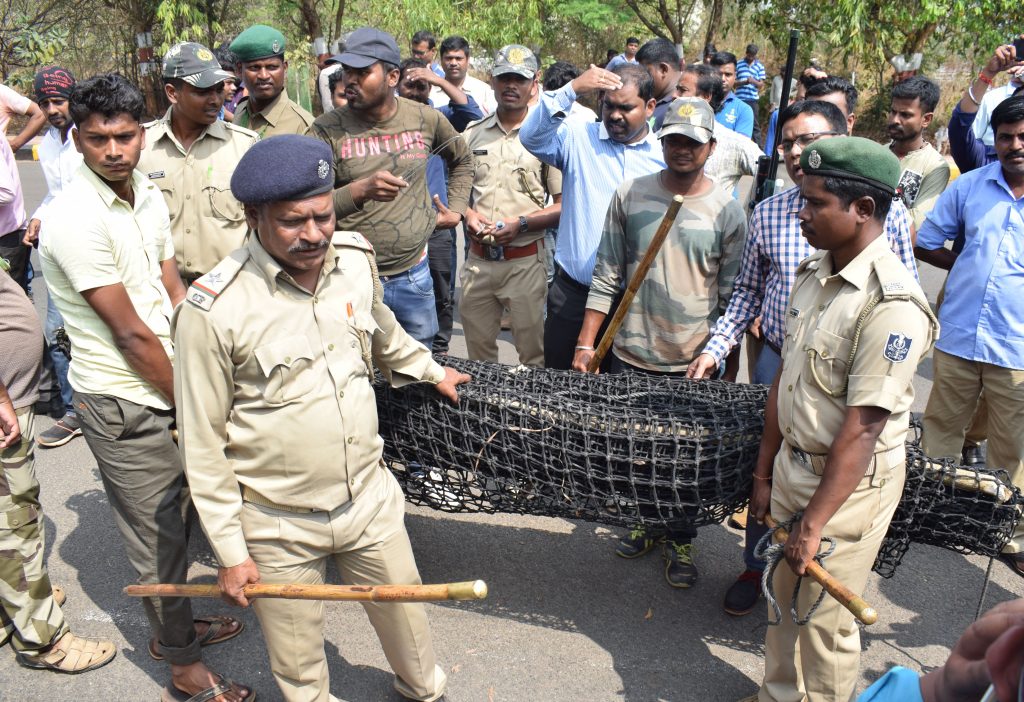Bhubaneswar: The recent incident of leopard sighting in city raised concerns about the security of humans and more importantly the situation of animals in the human world. The two recent incidents of leopards entering the city are not the only cases of animals encroaching on human space; there are incidents of pachyderms straying into the city.
A wild elephant strayed into the Mission area of Sundargarh Sunday morning. Forest officials reached the spot, traced the movement of the pachyderm and warned residents to stay away from the Mission area. The operation ended around 6pm. It was driven away from the Mission area of Sundargarh district Sunday after a 12-hour effort by Forest department officials.
In recent times incidents like these are on the rise. In 2013 a tiger escaped from the enclosure after jumping over a18-feet-high wire fencing and entered the village area nearby.
The incidents of death of elephants by electrocution have become common in Odisha. Last year, in Odisha, 67 elephants have died, nine out of which were electrocuted and six elephants were mowed down by trains. Records show that 45 per cent of death in elephants occurs due to unnatural causes.
Purabi Patra of Animal Welfare Trust Ekamra said, “It is not about providing a designated space for wild animals. It’s about human encroachment of wildlife habitats in the name of urbanisation and development. The incidents of big cats straying into the city or death by electrocution of elephants happen because their natural habitat is encroached upon and they stray in search of food and shelter.”
Kusal Biswas of the NGO ‘Speak for Animals’ said, “Leopards cover huge areas as their territories. I was present at the scene when the leopard was caught. Not surprisingly, it was teenage leopard searching for new territory. We are now killing their homes. The incident of the leopard entering the city should act as a warning that we need to find more sustainable ways to settle so that wildlife and humans can co-exist in peace.”
Sundara Narayana Patro, president of Odisha Environmental Society, is of the opinion that human need to restrict their expansion and not encroach on animal habitat. Animals such as a tiger need a larger habitat for survival. A tigress, for example, will need a 20-sq km (7.7 square miles) territory. A male tiger requires a larger territory, such as one that covers 60 to 100 square kilometers (23 to 39 square miles).
He also said that the government is failing to provide natural surroundings to the animals. Planting fast growing tress is not the solution to create a forest. Tigers need a range over thousands of kilometres to survive. If food resources were more densely distributed then tigers would roam over much smaller distances.
The government had selected 19 protected areas and sanctuaries for the animals but the rapid urbanisation cannot keep these sanctuaries safe from human encroachment. Nandankanan and Chandaka sanctuaries are the main examples of this problem.
Human assault endangers wildlife

File photo of Forest department officials laying the trap to catch the leopard that recently strayed into the human settlement in Bhubaneswar